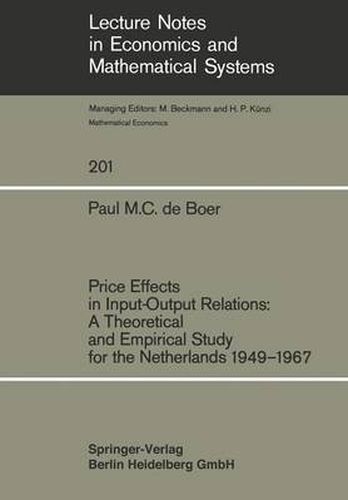Readings Newsletter
Become a Readings Member to make your shopping experience even easier.
Sign in or sign up for free!
You’re not far away from qualifying for FREE standard shipping within Australia
You’ve qualified for FREE standard shipping within Australia
The cart is loading…






This title is printed to order. This book may have been self-published. If so, we cannot guarantee the quality of the content. In the main most books will have gone through the editing process however some may not. We therefore suggest that you be aware of this before ordering this book. If in doubt check either the author or publisher’s details as we are unable to accept any returns unless they are faulty. Please contact us if you have any questions.
1.1. Pre Ziminary remarks Input-output analysis is one of the most extensively used tools of economic science. It has been introduced by Leontief (1941) who assumed that inputs into a production process of a particular sector of economic activity is a constant fraction of the output of that process in physicaZ terms. National account statisticians, however, record the inputs and outputs of sectors of economic activity in money flows. If those flows were voZumes (evalu ated at constant prices, pertaining to a certain base year) they could represent the physical amounts Leontief dealt with. Then, the Leontief assumption turns into constancy of ratios of volumes of inputs to volumes of output. For an over view of (traditional) input-output analysis we refer to section 4.1.1. In practice, however, input-output tables in volumes are seldom available; since as a rule they are expressed in monetary vaZues (i.e. evaluated at current prices). In that case one generally assumes that the ratios between inputs (in value terms) and outputs (in value terms) are constant. In appendix B to chapter 4 we prove that the two variants described above can be couched in terms of the (neo-classical) theory of costs subject to a production function.
$9.00 standard shipping within Australia
FREE standard shipping within Australia for orders over $100.00
Express & International shipping calculated at checkout
This title is printed to order. This book may have been self-published. If so, we cannot guarantee the quality of the content. In the main most books will have gone through the editing process however some may not. We therefore suggest that you be aware of this before ordering this book. If in doubt check either the author or publisher’s details as we are unable to accept any returns unless they are faulty. Please contact us if you have any questions.
1.1. Pre Ziminary remarks Input-output analysis is one of the most extensively used tools of economic science. It has been introduced by Leontief (1941) who assumed that inputs into a production process of a particular sector of economic activity is a constant fraction of the output of that process in physicaZ terms. National account statisticians, however, record the inputs and outputs of sectors of economic activity in money flows. If those flows were voZumes (evalu ated at constant prices, pertaining to a certain base year) they could represent the physical amounts Leontief dealt with. Then, the Leontief assumption turns into constancy of ratios of volumes of inputs to volumes of output. For an over view of (traditional) input-output analysis we refer to section 4.1.1. In practice, however, input-output tables in volumes are seldom available; since as a rule they are expressed in monetary vaZues (i.e. evaluated at current prices). In that case one generally assumes that the ratios between inputs (in value terms) and outputs (in value terms) are constant. In appendix B to chapter 4 we prove that the two variants described above can be couched in terms of the (neo-classical) theory of costs subject to a production function.